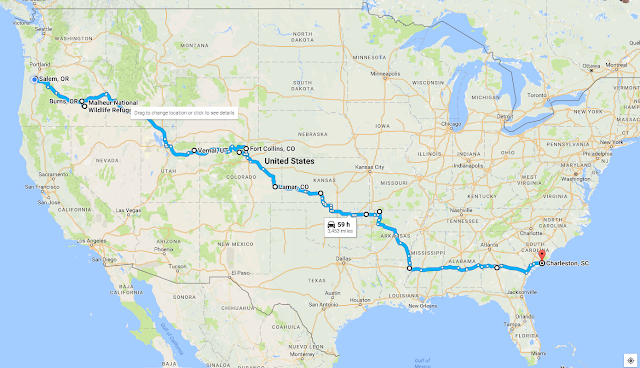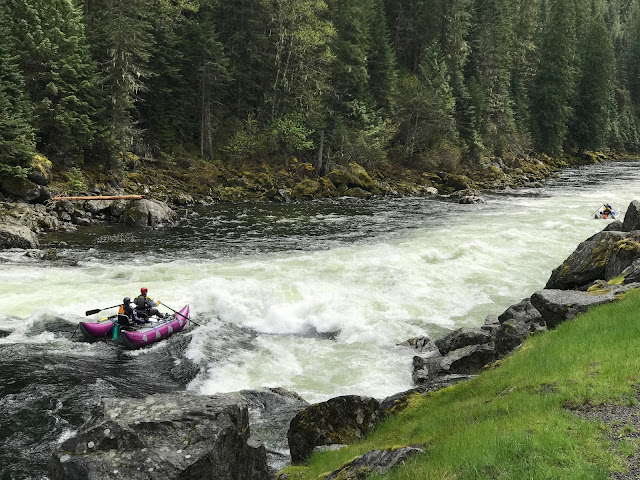Day 21 - Gettysburg, PA to Charleston, WV 356.2 miles but Still Behind...
 |
| Gettysburg |
No matter what you feel about wars and nationalism, we must have respect for the courage and dedication of those willing to walk forward into murderous cannon fire, rifles, and cold steel to protect their families, their friends and their nation.
To walk beyond your fears. To see Death felling fellow humans, horses, trees and birds with enormous scythes of destruction and to still put one foot in front of the other and move forward.
I have recommended previously, and do again, the book The Killer Angels about the Battle at Gettysburg. It is heartbreaking and one of the finest books ever written. It focuses on three men, all of great honor, who performed to their best.
General Robert E Lee of Virginia is one of the most famous of American generals. By every account he was brilliant and of the most upright character. He believed that slavery was an evil, yet he owned slaves.
Lee's "right hand" was General James Longstreet, whose views on slavery are not clear, but who was greatly troubled by having broken his oath of service to the United States, by agreeing to serve his state, Virginia.
Joshua Lawrence Chamberlain was a professor of rhetoric at Bowdoin College in Maine, who joined the Union Army while on sabbatical, so his college would not know, because he desperately wanted to serve.
At the battle, Lee insisted on a major engagement against the Union at Gettysburg. Longstreet, aware of the odds and favoring a new style of warfare than the "charge the enemy approach" strongly tried to dissuade Lee, but failed.
In the end, it was Lee who failed at Gettysburg, which turned the tide of the civil War.
One on the early engagements in the battle was the fight for Little Round Top.
 |
| Little Round Top |
 |
| The Open Approach to Little Round Top |
He was also told that he was to guard that place, the left flank of the entire Union Army, AT ALL COST.
Chamberlain spoke to those men who were deserters and said he would not kill any of them. It they want to run, so be it, but he reminded them of the evil of slavery they were fighting against. All but two took up arms for the fight.
Longstreet was in charge of the attacking force. He sent 6,000 men in the attack against Little Round Top and the adjacent lines. The Union soldiers had the rocks you see in the pictures to hide behind. There was the open approach in the picture but farther left on the flank there were trees to near the top.
Wave after wave of Rebel troops assaulted the hill. Wave after wave were beaten back. Bodies littered the approach.
Of the 300+ or so of Chamberlain's troops well over 100 hundred were killed or wounded and out of action. Even worse, they were out of ammunition, with his Union soldiers having a round or two at best.
Another attack was launched by the Confederates. At all cost means just that. No turning back, stand and die. And Chamberlain made the most remarkable command that no one would ever choose.
He ordered his men to fix bayonets and charge. They did.
Down the slopes, covered with bodies and shattered trees they ran, screaming at the top of their lungs. For the first time in the Civil War, the Confederate troops broke ranks and ran in terror. Stunned Rebel officers froze and surrendered without a fight. The remaining 160 or so Maine troops took 600 Confederate prisoners, who did not know that the guards had no bullets.
The implements of war change with time, and the destruction is multiplied many times over. But in the end it is about people fighting for what they believe in.
For the North, the politicians talked about saving the Union, but everyone knew it was truly about slavery, and ending the scourge that made a mockery of a Constitution that proclaimed equality for all.
For the South, the politicians talked about self-rule and an overreaching Federal government that took their rights, but everyone knew it was about slavery, and the threat to an economic system that had made many very wealthy and would collapse without out slavery.
If you believe that slavery is an intrinsic evil that threatens all of humankind, or if you're religious and believe that it violates the teachings of God, you are still in agreement. Slavery is totally unacceptable in the world, and especially in a free society.
This understanding was, until recently, only given lip service in the South. In the South, the Confederacy, even though thoroughly defeated, is held in honor by many. You cannot hold the Confederacy in honor if you truly oppose slavery. It is a straightforward contradiction.
The rationalization that people latch onto is that what they hold dear is the heritage and the sense of personal honor displayed by the leaders of the Confederacy most especially the Generals of the Confederate Army. That is understandable because, as I said above, the soldiers and generals of both the South and the North showed incredible bravery in their actions on the battlefield.
This is the kind of contradiction that we all live with in our lives from time to time.
Today the conflict in our society remains the same as it was then. Nixon turned the Party of Lincoln, the party that waged the war against slavery, to the party that embraced those in the South that could not stomach the Democrats turn to Civil Right for all. It was called the Southern Strategy, and it elected him to office in 1968. The overreach of the Federal Government has been the overriding theme of the Republican Party since 1976, since racism was too tawdry for the Republican elite. It remains their key, and it was used by Trump, compete with the overt racist undertones that he displayed in his successful run for office.
We are still fighting the Civil War.
But now, as it was then, the fight is between those who seek social justice and those who seek to protect their financial hegemony.



Comments
Post a Comment